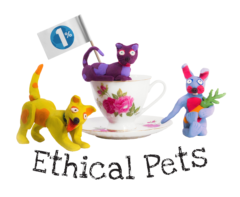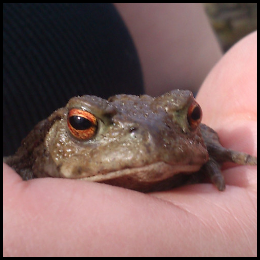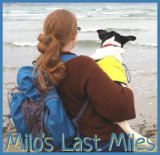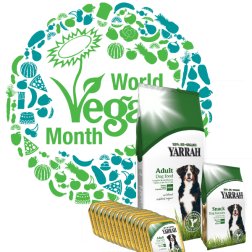Anna went walking with the dogs the other day and found around 30 squashed frogs in the road. The frogs were migrating (en masse) from higher up in the hills down to the waterside – but they had to cross the road to get there. The road was only an access route for the reservoir, and so a little careful driving could solve a lot of little froggies.
Category: Animal Rights and Welfare
Milo’s Last Miles: full of surprises
We thought Milo’s life was coming to the end. He had a tumour on his cheek that the animal sanctuary removed before we rescued him, but as is typical of the type of tumour, it came back.
Milo’s Last Miles: no such thing as plain sailing.
In animal sanctuaries there are dogs of all shapes and sizes… and some of them are very old. Milo was, until recently, one such dog. It’s hard for sanctuaries to find homes for dogs like Milo; they are often ill or needy and require a lot of attention and patience. Additionally, many people worry that it will be too sad befriend an animal who has only a few months left to live. At Ethical Pets, we have cared for a dog like this before, called Beth: we found living with her a wonderful and fulfilling experience, so we have decided to do it again! This time, we are keeping a blog in the hope that maybe others will consider adopting their own little Beth or Milo one day. So, here it is: our record of Milo’s Last Miles.
Continue reading “Milo’s Last Miles: no such thing as plain sailing.”
World Vegan Month – Could you and your dog take the vegan pledge?
November is World Vegan Month, where celebrities, businesses and everyday folk can take the vegan pledge for a week or a month, and see what it’s like to be vegan!
“I love animals…. but I could never give up meat” is something a lot of people say to me when they find out I am vegan.
Similarly “I have been vegetarian for years… but I just can’t live without cheese” is what a lot of my veggie friends have declared.
Continue reading “World Vegan Month – Could you and your dog take the vegan pledge?”
Milo’s Last Miles: Summer Holiday
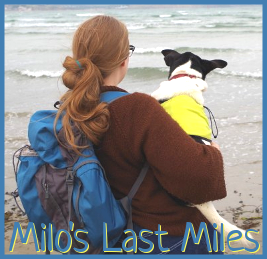 In animal sanctuaries there are dogs of all shapes and sizes… and some of them are very old. Milo was, until recently, one such dog. It’s hard for sanctuaries to find homes for dogs like Milo; they are often ill or needy and require a lot of attention and patience. Additionally, many people worry that it will be too sad to befriend an animal who has only a few months left to live. At Ethical Pets, we have cared for a dog like this before, called Beth: we found living with her a wonderful and fulfilling experience, so we have decided to do it again! This time, we are keeping a blog in the hope that maybe others will consider adopting their own little Beth or Milo one day. So, here it is: our record of Milo’s Last Miles.
In animal sanctuaries there are dogs of all shapes and sizes… and some of them are very old. Milo was, until recently, one such dog. It’s hard for sanctuaries to find homes for dogs like Milo; they are often ill or needy and require a lot of attention and patience. Additionally, many people worry that it will be too sad to befriend an animal who has only a few months left to live. At Ethical Pets, we have cared for a dog like this before, called Beth: we found living with her a wonderful and fulfilling experience, so we have decided to do it again! This time, we are keeping a blog in the hope that maybe others will consider adopting their own little Beth or Milo one day. So, here it is: our record of Milo’s Last Miles.
How green is your carbon tyre print?
 One of our favourite books, How Bad are Bananas? By Mike Berners-Lee, has some sensational cycling facts. This month, subscribers to our newsletter get the chance to win a copy! You need to sign up for your chance to enter. When you get your newsletter, there will be a question in it, simply reply with the answer, and winners will be picked out of the hat! 🙂 Good luck!
One of our favourite books, How Bad are Bananas? By Mike Berners-Lee, has some sensational cycling facts. This month, subscribers to our newsletter get the chance to win a copy! You need to sign up for your chance to enter. When you get your newsletter, there will be a question in it, simply reply with the answer, and winners will be picked out of the hat! 🙂 Good luck!
Eco Facts
Our favourite fact is that it would be greener to drive a hummer than to cycle after eating air freighted asparagus! Checkout our cool graph below comparing a few bike fuels (food) to some other forms of transport.
Cycling to work
Another interesting fact is that a congested commute in an average car comes in at 2200g CO2e per mile. This is much much worse than normal driving – almost as bad as your air freighted asparagus mile. So, the lesson is that cycling to work is a serious planet saver… so long as you don’t eat asparagus out of season for breakfast!
Food and Carbon Footprints
The carbon footprint of food is always interesting to us at Ethical Pets, with folk claiming we should eat our pets to save the planet, we think its important to show pets can be green too.
In the graph you can see that veg isn’t always greener, but that in general, meat is much more carbon heavy that veg. The same trend is clear in the rest of the book, for example, we learned that a 4 ounce steak makes more carbon than a 6.5 kg bag of carrots! Or, for the same carbon as a 2 kg leg of lamb, you could eat milky porridge every day for 4 whole months. Oats, wheat and even naughty old rice are much lower in carbon than any meat.
Pet Food: good and green!
We know that veggie pet food can be healthy, but apparently is very green too! So, if your dog or cat were going to cycle, a little Yarrah or Benevo would be the ideal fuel to choose!

Hope and Freedom – Two amazing Dogs Trust projects.
Dogs Trust, the UK’s largest dog welfare charity, has been helping homeless and vulnerable dog owners for almost 20 years through its Hope and Freedom Projects.
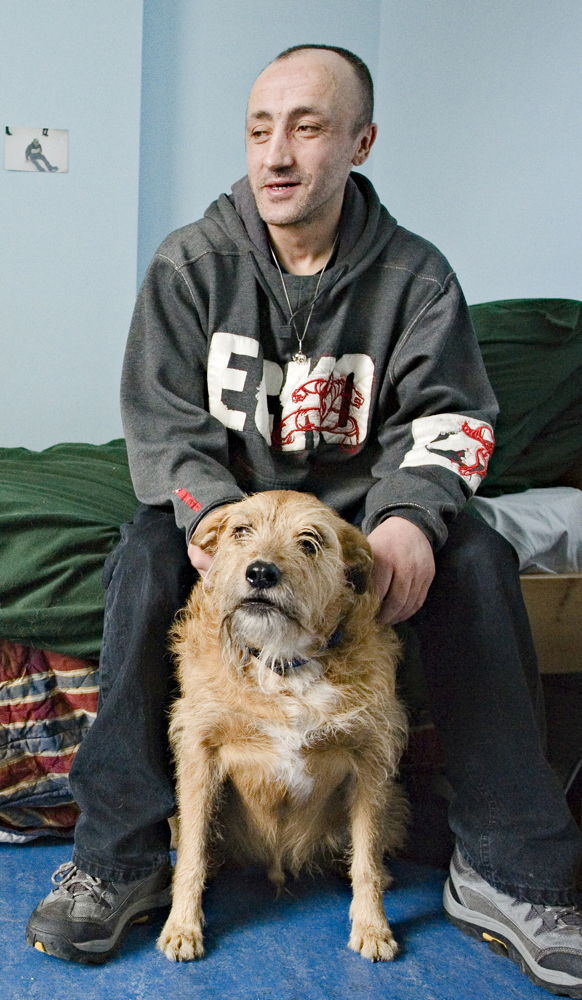
The Hope Project
The Dogs Trust Hope Project helps dogs whose owners are homeless or in housing crisis by providing advice, support and veterinary assistance for their dogs.
The Hope Project Veterinary Scheme offers free and subsidised veterinary care to any dog owner who is rough sleeping or living in temporary accommodation. The scheme runs in 100 towns and cities across England, Northern Ireland, Scotland and Wales and offers free preventative healthcare – microchipping, neutering, vaccinations and flea and worming treatments. Dogs Trust can also subsidise most other essential veterinary treatments that a dog would need. Since the scheme began in 2004, the Hope Project has funded more than 10,000 veterinary treatments.
The Dogs Trust Hope Project also works with providers of homelessness accommodation to encourage them to accept residents with dogs. Unfortunately most homelessness organisations and housing providers in the UK still do not accept clients with dogs. Currently only 7% of hostels are dog-friendly [1]. This means that many people are being denied access to shelter and support, simply because they have a dog. Dogs Trust offers advice to accommodation providers on a range of issues such as introducing a pet policy, health and safety, hygiene and behaviour.
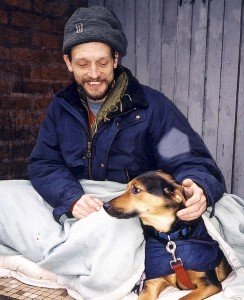
Every Christmas, Dogs Trust works with winter shelters and homelessness projects to provide a Christmas parcel service. Christmas can be an especially difficult and lonely time for people who are homeless. By sending out parcels of treats, toys, coats, collars and leads, the Hope Project tries to make Christmas special for homeless people and their dogs as well as providing essential coats and jumpers to keep the dogs warm during winter.
The Freedom Project
The Dogs Trust Freedom Project is a pet fostering service for dogs belonging to families fleeing from domestic violence.
Each year, thousands of women suffer abuse at the hands of their partner. Research indicates a strong link between animal abuse and domestic violence, with men who are violent to women often threatening or harming a pet in order to intimidate their partner.
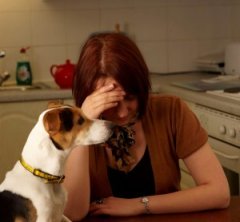
Families fleeing domestic violence are usually unable to take their pets with them into a refuge or temporary accommodation, so in many cases they are reluctant to leave their home until they know there is somewhere safe for their pets.
Dogs Trust offers a service which places dogs in the homes of volunteer foster carers until their owners are in a position to take them back. Dogs Trust covers all expenses so there are no costs for the volunteer foster carer or dog owner. The service operates in Greater London, Hertfordshire and Yorkshire. In Greater London & Hertfordshire, Dogs Trust can also foster cats in partnership with Cats Protection. Since it began in 2004, the Freedom Project has fostered more than 1000 pets.
[1] Homeless UK, Homeless Link.
For more information on Dogs Trust’s Hope and Freedom Projects, please visit www.moretodogstrust.org.uk
 Dogs Trust is funded solely by public generosity. If you would like to make a donation towards the work of the Dogs Trust Hope Project or the Dogs Trust Freedom Project, please go to www.moretodogstrust.org.uk/donate.
Dogs Trust is funded solely by public generosity. If you would like to make a donation towards the work of the Dogs Trust Hope Project or the Dogs Trust Freedom Project, please go to www.moretodogstrust.org.uk/donate.
Want to read more articles like this? Sign up to our newsletter!
Missi Hathaway on Ethical Pet Insurance
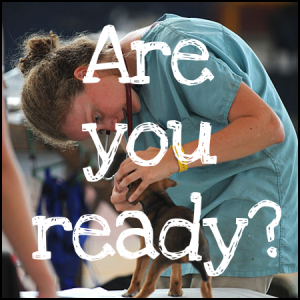 The Importance of Insuring Your Pet
The Importance of Insuring Your Pet
Our pets are part of the family, which is why we should go to great lengths to look after them. If they sadly become ill or have an accident, it is our responsibility to get them the right care. Unfortunately, the cost of taking animals to the vet can be high which is why having the right pet insurance in place can protect owners and the animal. We may not like to think of our animals becoming unwell or getting knocked down on a main road, but if the worst happens, it’s best to be prepared with a comprehensive pet policy. It’s not just illnesses or accidents which require a trip to the local vet either. When we first get our new addition to the family, we need to make sure of a number of things. Depending on the kind of pet you have, you may need to inoculate them from any infections that can be picked up. Kittens for example need a series of injections before they can go outside. You may also want to have them micro chipped. Animals prone to running away or getting stolen can be identified by a chip that brings up the owner’s details when scanned. Neutering or spaying your pet will also prevent any unwanted breeding occurring and can also reduce the cost of a pet insurance policy, albeit marginally.
Getting Insurance For Your Animal
There are different ways to go about insuring pets. You have to look at what is cost effective for you and the kind of animal you own. The most popular pets in Britain are dogs and cats, followed by rabbits. All pets however need to be considered when it comes to those hefty vets bills. Some will require more specialist insurance, such as horses and ponies. You need to check you are covered for public liability insurance, accident cover and if appropriate, horse boxes. Looking at the small print is vital, rather than just going with the cheapest provider. Check your pet is covered for: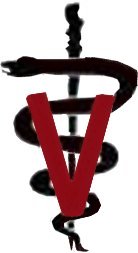
* Type or breed of animal
* Travel
* Age of the animal
* More than one pet
* Kennel or cattery fees
* Death
*Accidental damage
You will also need to get the right policy. If you will need long term care for a pet with medical problems, you’ll need a high level cover.
Ethical Pet Insurance
You may feel that investing in your pet is costly, but it is best to be prepared if the worst happens. If you don’t have money put aside, insurance will protect your purse and your pooch. Going with an ethical provider can mean a percentage of the net profit goes to animal charities so you can be involved with helping out other animals in need. When looking for ethical insurance, you can take into consideration how much it will cost you to insure your pet, and how much is donated to charity. For example, the Animal Friends insurance group have so far donated over one million pounds of their profits to welfare charities in the UK and worldwide. They also offer good value insurance.
There are many ethical providers of pet insurance. Some are considered to be eco-friendly as they donate some of the profits they make to help endangered species. Some also contribute to conservation organisations which help to conserve natural habitats for wild animals. These include wetland and wildlife areas as well as protecting plant life. Some of the insurance organisations donate their profits to various animal welfare charities both nationally and internationally. The Co-Operative bank have declined finance from businesses who do not meet animal welfare standards. They will not promote animal testing, blood sports, the fur trade or exploitation of great apes. This means only accepting finance from companies who are not involved in these trades. They are also against intensive farming, which involves farming caged animals.
When deciding on an ethical insurance company, you may consider which to go with on a number of factors. This may depend on which charities the profits are donated to, how eco-friendly they are or which ones contribute to climate change. Some may be clearer on their investments than other companies, so you will know where the money goes.
Also, the cost of the insurance and excess and getting the right kind of insurance for your particular pet is important.
Alternative Ways to Afford the Vet
Saving enough money to put aside for emergencies can have it’s advantages and disadvantages. Using an easy access savings account can help when you need some cash for your poorly pet. The downside would be that you would have to have enough money in your fund in case you need it. If your pet needed an unexpected visit to the vet, you will need some funds to hand.
However, you may to decide not to ensure your pet. The advantage would be if your pet stays well, and you’ve saved money you would have otherwise spent on insurance.
It is a good idea to get a good deal for your savings account, or if you need a low interest loan to use for vets bills. There are ethical ways to save money with mutual savings banks. They are set up by depositors and borrowers, and all the profit is reinvested in itself. Also known as credit unions, joining the scheme is an alternative.
The credit unions are non profit organisations and so you can put away as much as you like into your savings account. The credit unions pay a yearly dividend, meaning you get money back at the end of it on a percentage of what you saved. If you use this as an alternative to pet insurance rather than putting money into insurance, you are also saving. So, if your pet doesn’t require a visit to the vet that year, you have your savings and any extras on top. It could come in handy if anything happened to your beloved companion.
_____
Missi writes on behalf of one of the UK’s largest consumer advice and information portals. She specialises in pet health and insurance topics. She grew up in Southampton, PA but is spending most of 2013 in Manchester, England where she has family.
The Paw Report Report – Vol.1
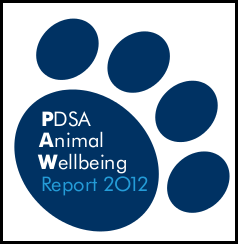 The new PAW Report, by PDSA and YouGov, lifts the lid on some of the most concerning pet health and welfare issues facing UK pets today. With sections focusing on Diet, Behavior, Health and Ownership, their is lots to read and talk about. This is our review of Section 1 of the report: Food in Focus.
The new PAW Report, by PDSA and YouGov, lifts the lid on some of the most concerning pet health and welfare issues facing UK pets today. With sections focusing on Diet, Behavior, Health and Ownership, their is lots to read and talk about. This is our review of Section 1 of the report: Food in Focus.
The statistics which really jumped out at me from this part of the report are that that only 3% of dog owners can identify the ideal healthy shape of a dog when shown a range of images and that 56% of cat owners with an overweight cat believe that their cat’s shape is as it should be. Are you one of them? Despite how many people are unsure about their pets weight, people seem well informed about the consequences of chubby pets – fat related diseases and a shorted life span. Somehow, we have learned that fat is bad, but not what fat looks like: checkout our quiz below to see if you can pick out the pets with a healthy figure.
Another worrying issue is that many Rabbit owners are feeding their bunnies incorrectly: remember, rabbit muesli is just for a treat – bunnies should eat at least their own body size in hay or grass each day for their main course, and then just a little muesli and/or fresh veg for pudding.

Click to see the Paw Report and weight guides for cats and dogs.
Pet Food: Why Organic?
What does “organic” mean in relation to pet food?
Animal Welfare: For Yarrah as an organic pet food company, the most important aspect of organic agriculture is the very high regard for animal welfare. Poultry, cattle and fish form the basis of our premium Nature’s Finest pet food. It is therefore crucial that these animals are treated with dignity and respect. Organic agriculture guarantees that poultry and cattle have room to move and grow at a natural rate in an environment that minimizes stress. Because regulation regarding organic fish do not meet our standards of animal welfare, Yarrah has decided to switch to MSC-fish (read our statement!).
Nothing artificial: Yarrah does not add any chemical colorings, aromatic substances or flavorings. We do not use artificial preservatives: we preserve our dry food with vitamin E and rosemary extracts. For our wet food we use precise temperatures for sterilization. These steps ensure that the valuable vitamins and minerals are not broken down during production.
Our natural and organic recipes contain all the required vitamins, minerals, proteins and amino acids a dog or cat requires in the correct proportions. All of our products are made from certified organic materials in compliance with EU Regulations for Organic Products. The Dutch organic hallmark (EKO) issued by Skal is the guarantee for the organic origin and manufacture of the products.
All certified organic ingredients are completely traceable to the source. All the organic materials are constantly monitored from start to finish ensuring they meet our stringent requirements. To be sure all the ingredients are 100% organic, Yarrah buys all the ingredients themselves. To give this 100% guarantee the Quality manager of Yarrah visits the producers personally; the larger ones at least once a year, the smaller once at least every other year.
No animal testing: Yarrah deliberately rejects any and all animal testing. Any palatability tests (to gauge the pets acceptance of the product) are carried out in the pets natural home setting. Yarrah does not allow any of our foods to be tested using either captive animals or invasive testing techniques. This has some consequences for our health claims. We cannot claim that our products have beneficial influences for your pet. Luckily there are many people who are very happy with our products and are willing to tell this to others.
Alternative testing: How do we test our products? Simple: if we want to introduce a new flavour or a new product, we ask about 100 dog or cat owners to feed the new product to their pet. Of course none of the ingredients has a health risk, so it is absolutely safe for the pet to eat the new product. If they like the product, we will adopt the new product. We are proud that we can use the logo of the Dutch Society against animal testing.
 Why organic pet food? Is it better for our pets?
Why organic pet food? Is it better for our pets?
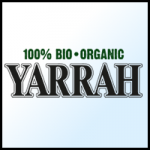 Yes, organic pet food is better than conventional pet food because what it does NOT have. A dog in general is not very picky when it comes to food. If the food smells good, the dog will eat it. There is a reason that most if not all dogs will always eat (high end) conventional food, the added chemical scents or fragrances that are applied ensure this.
Yes, organic pet food is better than conventional pet food because what it does NOT have. A dog in general is not very picky when it comes to food. If the food smells good, the dog will eat it. There is a reason that most if not all dogs will always eat (high end) conventional food, the added chemical scents or fragrances that are applied ensure this.
The second reason that organic is better is the lack of preservatives. Conventional dog food is preserved with chemical preservatives to give the food a longer sell by date. Organic pet food has a short shelf life because no chemical preservatives are applied. Natural/organic antioxidants such as rosemary extracts are used instead.Are these chemical fragrances and preservatives really healthy for dogs? Probably not. Can these chemicals cause irritations in dogs? Maybe, but why risk it when they can be avoided.
Arguing that the organic grain and meat ingredients being better than conventional can be controversial. There are many studies that prove organic agriculture produces higher quality, more nutritious products, but there are also studies that claim there are no differences. What organic pet food CAN guarantee is that there are no chemical pesticide residues, genetically modified organisms or pharmaceutical residues in the food.
Organic pet food, at least in Yarrah’s case, also guarantees that we do not use bones, feathers, hooves, blood or other cheap fillers in our products.
Does organic food improve animal welfare for farm animals and wild animals (too)?
Organic farm animals are treated much better than animals in the conventional farming industry. An organic chicken for instance lives twice as long and has over 16 times more space to live on and is able to go outside. The beef Yarrah uses, are completely grass-fed so no tropical forest have to be cut to grow soy. Organic farmers do not use dangerous pesticides, so also small rodents and useful insects like bees are not harmed.
 What changes would Yarrah like to see in the pet food industry? Where would you like pet food to be in 100 years?
What changes would Yarrah like to see in the pet food industry? Where would you like pet food to be in 100 years?
 The first thing other pet food producers should stop doing, is testing their food on animals in kennels. A dogs life should not be used in this way; it has a right to have a normal life among people in a family.
The first thing other pet food producers should stop doing, is testing their food on animals in kennels. A dogs life should not be used in this way; it has a right to have a normal life among people in a family.
The next step should be informing the customer truthfully about their products and where the ingredients come from. It is a terrible idea that people do not know that they are feeding their pets with meat of animals that are kept in small cages, with no room to live.
In 100 years, but hopefully much sooner, all pet owners will get the message that harming one animal to feed another is not acceptable. They will demand to know what is in their pet food, they will realize that chemical flavors, fragrances and colors are not needed, and will pick their brand of pet food purely on quality standards and not the amount of marketing budget a brand has available.
